2. Stripe Marketplace Payment Solution (Stripe Connect)
3. How Do Marketplace Payments Work in Stripe?
Meaning of the Auth and Capture function
4. Types of Connected Accounts in Stripe
6. Countries Supported by Stripe for Payments and Payouts
7. Stripe-Supported Currencies
8. Pricing Model and Commissions
11. Benefits of Using Stripe Payment
Subscribe and you will promptly receive new published articles from the blog by mail
It is critical for e-commerce businesses to create a convenient and secure environment for online transactions. According to Statista, digital and mobile wallets and credit and debit cards remain the most popular payment methods. If you want to ensure an easy and reliable transfer of funds, choosing the technology-first payment gateway Stripe for a marketplace makes sense.

1. What is Stripe?
Stripe is a global technology company that helps businesses accept and process web and mobile payments. Its services are used by millions of businesses of all shapes and sizes, from startups to seasoned Fortune 500s. Stripe payment solutions fit various business models, including e-commerce sites, online retailers, B2B and B2C platforms, and SaaS. The company is trusted by such giants as Shopify, Booking.com, Universe, and Deliveroo. Famous Stripe marketplace examples include Amazon.
The service provides a set of tools that allows:
- ensure that payments from customers in different countries are accepted in minutes, increasing conversion rates;
- optimize ordering by introducing popular payment methods on a global level;
- adapt the payment interface to the requirements of customers from a particular country or region;
- ensure PCI compliance through integrations with Apple Pay, Google Pay, Alipay, and other services;
- guarantee a seamless experience across multiple channels, including online booking and in-store pickup;
- simplify one-time and recurring payments, as well as subscription management.
Thus, the solution acts as an intermediary between a buyer and a seller who makes the payment. It solves all the problems of paying by card, including data storage, periodic payments, and withdrawal to the bank account, while providing security through verification (KYC).
In this case, it provides a high speed of data processing and reliable protection. From the point of view of using Stripe for your marketplace, integration with websites and corporate systems that are already in use in the enterprise plays an important role.
Stripe is a valuable tool for a marketplace, which allows to optimize internal processes related to finances and establish a trusting relationship with customers. This is possible thanks to special solutions tailored to the industry’s requirements.
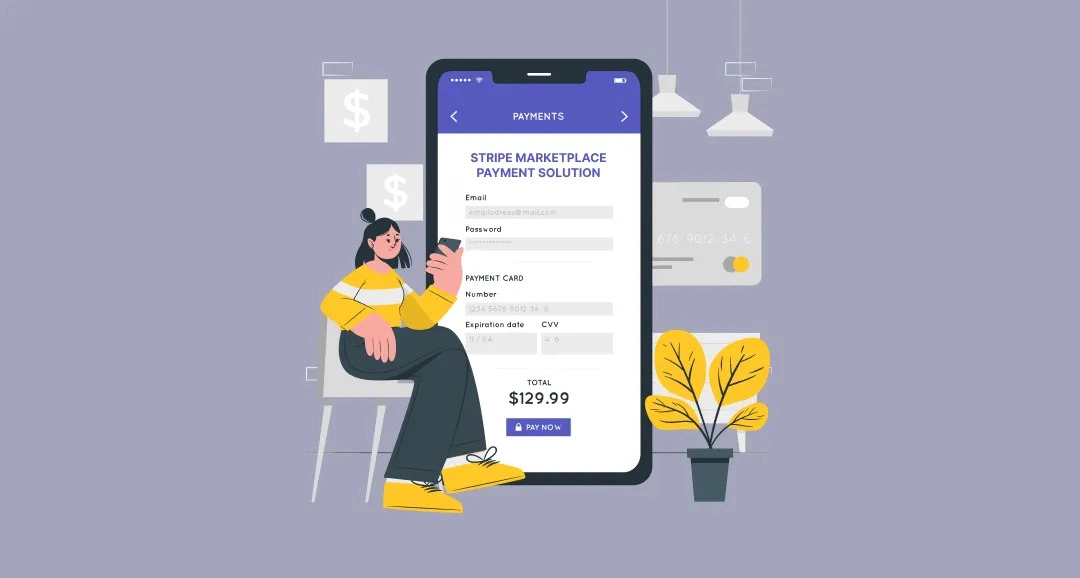
2. Stripe Marketplace Payment Solution (Stripe Connect)
Stripe Connect can be called the best option for organizing the payment process on an e-commerce website. It leads in terms of simplicity, accessibility, and speed of setting up payment methods, payment processing, and global scalability.
The comprehensive capabilities for marketplaces that Stripe provides
- Security. Mandatory card and bank account verification is performed before launching a financial transaction. Transaction fraud is excluded due to the MO-based Radar technology. If suspicious activity is detected, the account is blocked.
- Compliance. The service is regularly updated, adapting to the current requirements of your industry. This is done automatically without your involvement and does not affect the correct operation of already established processes and integrations. This ensures compliance with industry standards PCI DSS Level 1, PSD2 SCA, and GRPR privacy requirements.
- Onboarding. Supports 35+ countries with adaptations for 14 languages, ensuring a seamless user experience. For your convenience, there are both ready-to-use UIs and flexible APIs that you can use to create your own conditions to increase conversions.
- Taxes. Various tasks for handling 1099 tax returns are automated: generating, storing, processing with the IRS, and filing. There is no need to manually collect data from various sources, reconcile it, fill it out, and verify it. Taxes can be calculated automatically based on location.
- Payments. Various payment methods are available (online, mobile, point-of-sale, subscription, billing) and payment methods (e.g., credit/debit cards, Apple Pay, Alipay, ACH). Globally 130+ presentment currencies and 15+ settlement currencies are supported.
- Payouts. Stripe offers a clever global routing and payout mechanism to easily and securely send money to users around the world. Payouts are supported in 50+ countries. It allows you to transfer funds to connected accounts in different countries if you have an account on the platform and charge configuration.
- Reporting and analytics. The service offers an intuitive dashboard that aggregates up-to-date data within transactions, payments, and users. You can configure role-based access to provide additional security.
These are the core capabilities of Stripe for businesses that operate in an on-demand, retail, or even crowdfunding model. Stripe Connect offers four sets of features to meet the specific needs of such companies:
- Onboard users, including verification, compliance, and security.
- Accept payments globally with optimization.
- Payout users for split and route payments to multiple parties.
- Manage and monetize at the level of platforms, marketplaces, and users.
Thus, using sets of unique tools and features, you can set up all internal payment processes and set up appropriate external connections. The main thing is to understand how Stripe works for your business.
3. How Do Marketplace Payments Work in Stripe?
The solution ensures correct payment from when users enter their card information and debit their account to be credited to the seller’s account. It means faster and more stable customer service for a marketplace owner.
Let’s explore how Stripe works from the perspective of you as a marketplace owner and your customers:
- Create a business account on the Stripe website and integrate the solution with the purchasing page on your platform.
- Customer inputs their payment card data into the appropriate field during ordering.
- Processing of the entered data by the payment gateway and checking for the funds required for payment.
- Processing of Visa, MasterCard, or other credit card network payments and their approval/rejection by the bank.
- Informing the buyer that the payment has been confirmed or rejected.
- In case of payment confirmation – debiting the consumer’s account and crediting the seller’s account. In case of payment rejection – refund to the buyer
The cash flow is as follows:
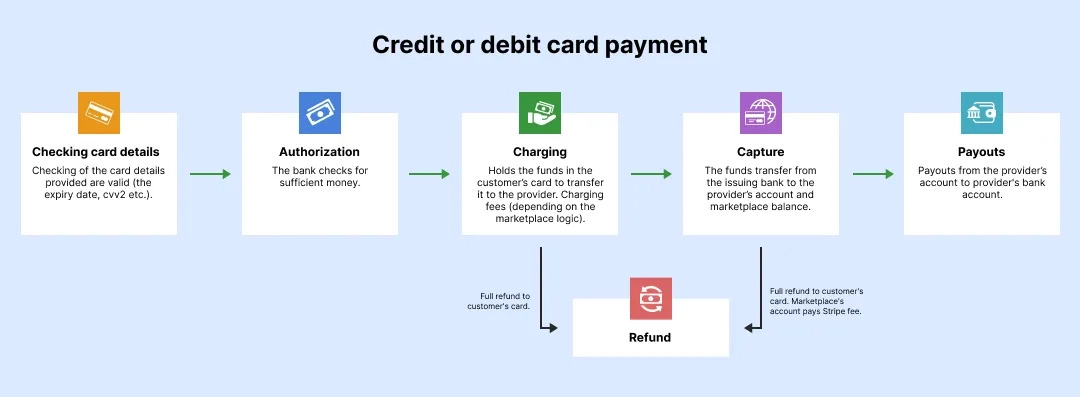
Client provides payment data:
client → payment gateway → card network → bank
Customer is notified of the payment status:
bank → card network → payment gateway → client
Account debit:
payment confirmation → buyer’s account → seller’s account
For developers who customize processes, this solution is a real godsend. It’s all about the flexibility of the API, which simplifies Stripe payment solution integration and extends the payment functionality. One such valuable feature available through the API is Auth and Capture.
Meaning of the Auth and Capture function
By default, payments are created in one step, and funds are automatically sent to the bank account. With this feature, the rules of the game change, and payments become two-step:
- Authorization. The customer enters card data during order placement, and the payment request is sent to the payment gateway. The issuing bank checks the card for sufficient funds to pay for the product/service. After confirmation of solvency, the amount is reserved until debited. There is a maximum of 7 days before a transaction goes into Capture or Cancelled state (this state is not available for all Payment Methods).
- Capture. The payment is divided into two parts: one goes to the provider, and the other goes to the owner of the marketplace. Initially, the payment has the Destination attribute, which specifies the provider’s account. Debiting from the cardholder’s bank account can be performed after the customer has received the order.
The pending Stripe payments look like this:
Request for payment → Authorization of card → Confirmation of client → Withdrawal of payment/cancellation of a transaction
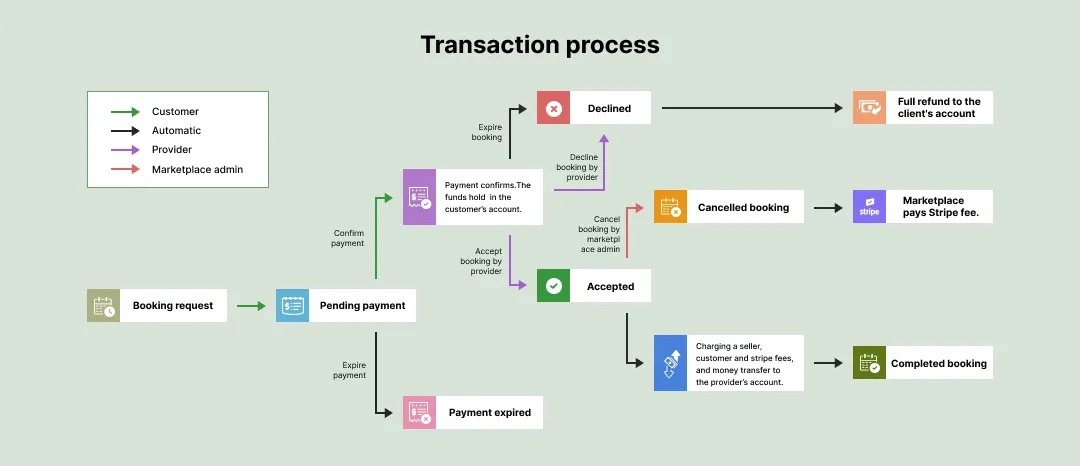
Before the money withdrawal, the merchant has time to check the client for suspicious actions and, if necessary, to cancel the payment. It is also an opportunity to make sure that the desired product is in stock and ready for shipment or that the rented item is free on the desired dates – and only then confirm the client’s request.
Each user receiving money on the marketplace must be connected to Stripe. Sellers can manage accounts themselves or directly by your marketplace via API.
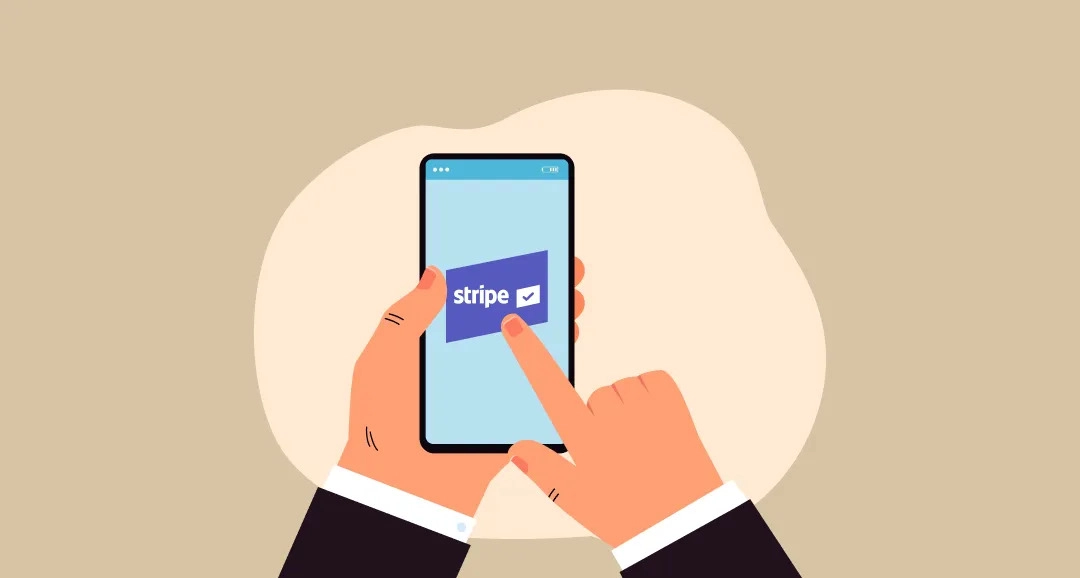
4. Types of Connected Accounts in Stripe
Stripe payouts for marketplaces are available to the user (merchant, service provider) with an appropriate account. Its type determines the possibilities of integration with the solution and operational responsibilities.
Let’s look at the three types of accounts and their features:
1. Standard
The user gets to work instantly because they have full access to the dashboard and can process the payments themselves. The seller controls their account and can deactivate it if necessary.
This option is worth choosing when it is important to:
- get up and running quickly without time-consuming setup of integrations;
- use direct payments (with a merchant account);
- engage users with experience in running an online business;
- trust Stripe with onboarding and collecting information about users.
2. Express
Stripe takes care of onboarding, account management, and verification. In turn, the marketplace controls such aspects of activity: branding, the flow of funds, and payout schedules. The user manages personal information and tracks payouts on a built-in dashboard.
This option is worth choosing when it is important to:
- shorten the time to market for an e-commerce product;
- to work actively with the market;
- have average control over users;
- independently prevent fraud.
3. Custom
The marketplace receives increased control of participants and is responsible for all interactions with them, since the account owner has no access to the dashboard. It is only natural that efforts will have to be made to develop and create API integrations.
This option is worth choosing when it is important to:
- easily customize the UI (onboarding dashboard, reporting);
- take advantage of the benefits of the KYP charges;
- collect KYP information through its infrastructure;
- manage interaction with users.
You can choose the most effective account type by yourself or by using the recommendation displayed after filling out the platform profile. Another important step in working with Stripe is to choose a payment method.
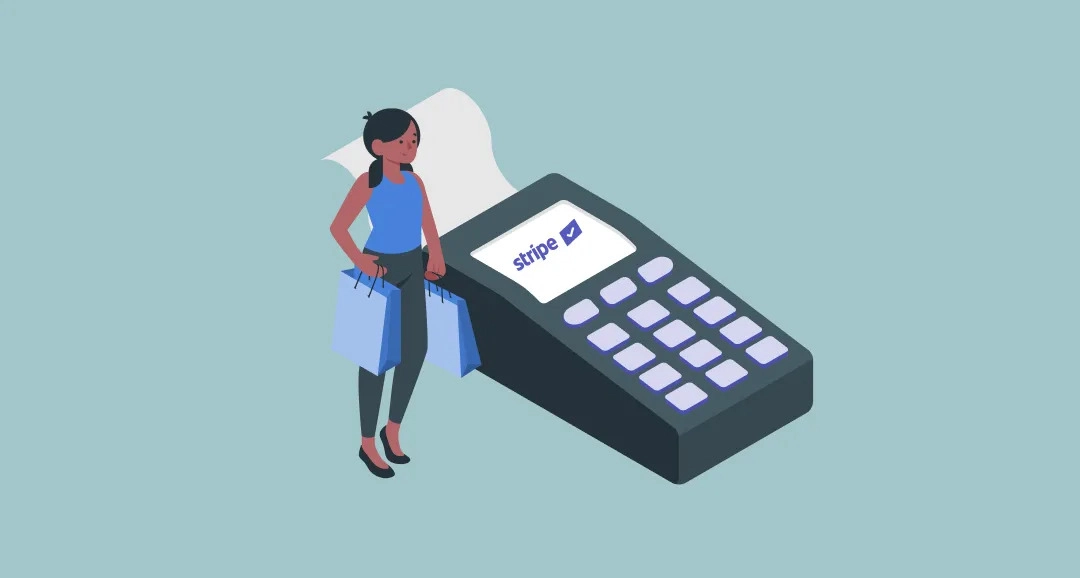
5. Stripe Payment Methods
Using popular payment methods in Stripe is sure to increase your reach. The more options you offer, the higher the chances that the user will successfully complete the order. This means the merchant will attract revenue, and your marketplace will get one more satisfied customer.
What Stripe-accepted payment methods are suitable for running an e-commerce business:
- Cards. Global brands (Mastercard, Visa) and local networks (Interac, Cartes Bancaires). In the first case, unlike in the second, you will not need additional configuration. The same goes for American Express, JCB, and some other brands. The customer enters the details of the card linked to the debit/credit account.
- Bank debits. Funds are withdrawn from the client’s bank account, information about which they provide. The user also agrees to debit the account. Possible for one-time and recurring purchases, e.g., in B2B relationships.
- Bank redirects. Payment for online purchases is made from a bank account through a secure interface. The emphasis is on fraud prevention and maximizing conversions.
- Bank transfers. The transfer is performed between bank accounts, which means that the buyer must have the data of the seller’s virtual account. The optimal way for large B2B payments.
- Buy now, pay later (BNPL). The customer gets to make a purchase in advance and pay the rest later, based on an agreed number of payments. Suitable for the retail of expensive goods, as well as for attracting new customers.
- Vouchers. This is an alternative for the customer who does not have a card or bank account. The digital voucher with transaction data can be used at local points of sale.
- Wallets. The customer confirms the transaction by authenticating the smartphone’s wallet account or fingerprint/face recognition. This is a chance for the retailer to reduce fraud risks and attract mobile users.
In terms of marketplaces, such business models are profitable: cards, bank redirects, wallets, and BNPL. They all provide essential aspects of online service: ease of payment, speed of transactions, and one-click order placement. At the same time, cards and wallets are better than all the others for multiple payments.

6. Countries Supported by Stripe for Payments and Payouts
Where does Stripe work? This is a total of 47 available countries (you can read more about the list on the website).
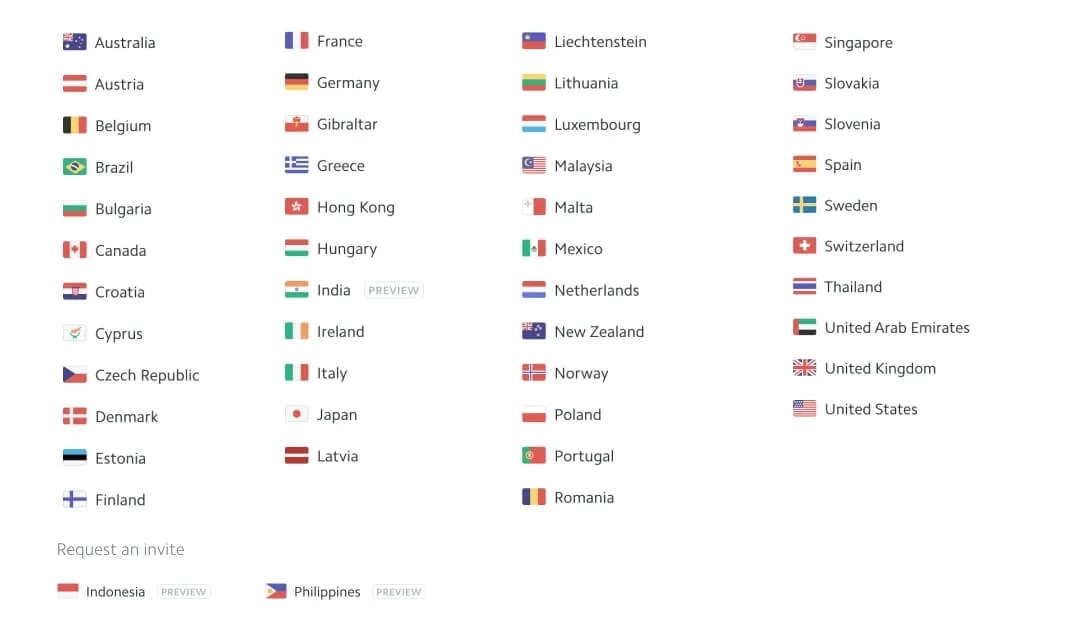
Does Stripe work internationally? Yes, but payment methods can vary from country to country. Here are some examples of multiparty payments. ACN Credit Transfer is available only in the US. Bank transfers cover 37 countries, Apple Pay covers 43, and Google Pay covers 41 countries. The Pix platform works in Brazil, and GrabPay works in Malaysia and Singapore.
You can check the availability of payment methods in the corresponding list. Another option is to use the API capabilities. It will allow you to find out exactly whether it is possible to choose a certain method with this or that account.
Payouts
Payouts of fiat money or cryptocurrency are available to users in 50+ countries. They can be funded by payments accepted through Stripe or directly from a bank account (for the US). Either way, you can use the infrastructure offered to automate workflows, KYC, and verification.
Cross-border payouts enable U.S. platforms to pay Express and Custom connected accounts in 110+ countries. It is important to understand that banks in a number of countries have special requirements for payments coming from abroad. As for cryptocurrency, it is available in a limited number of countries.

7. Stripe-Supported Currencies
Customers using your marketplace can pay in their local currency. At the same time, sellers will receive funds in a bank account in their country’s currency. Charge in different currencies is especially important if the business targets a foreign audience.
In total, the service processes payments in 135+ currencies. In some cases, the client may be charged by the issuing bank for conversion, for example. However, the currency does not always play a role. A fee is also charged if the credit card and the business are located in different countries.
To allow your audience to use multiple currencies to make purchases, you need to research in advance what options are supported in a particular country.
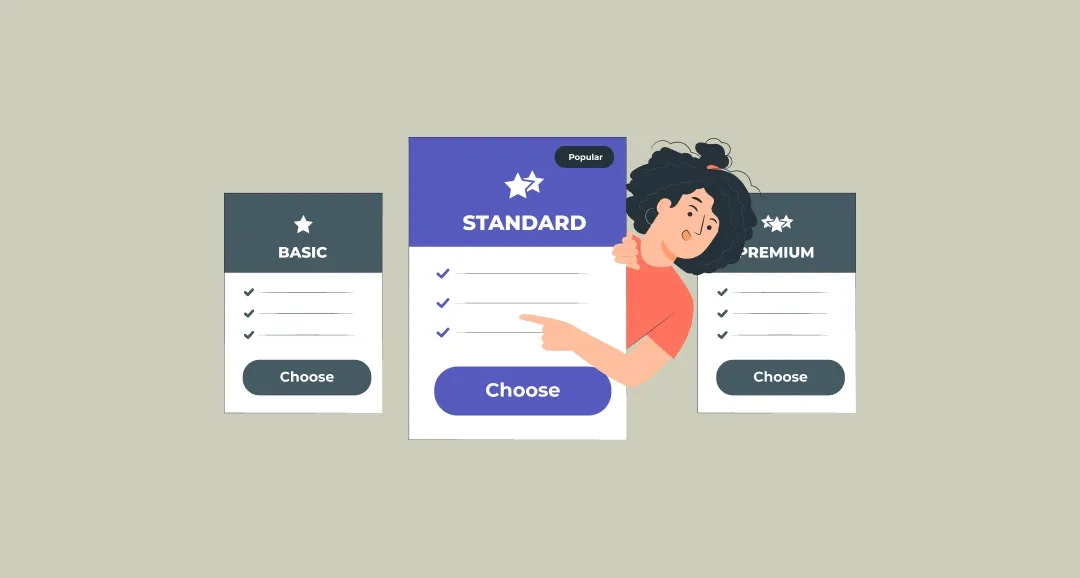
8. Pricing Model and Commissions
Stripe offers marketplaces flexible pricing depending on the capabilities needed. To start with, the solution can be used for free, with no monthly or annual fees. It all depends on the Connect plan you choose:
- Standard. The features provided (dashboard for sellers, support in 30+ countries, KYC checks, etc.) require no payment and no platform specific fees. At instant payouts, 1% of the payout volume is charged.
- Express and Custom. The payment process is configurable in both cases. However, Custom allows more flexibility in API management, UI customization, and payouts and therefore requires engineering resources. Prices: $2 per active account; 0.25% (+25 cents) per payout sent. At instant payouts, 1% of the payout volume is also charged.
Stripe marketplace fees apply internationally and nationally and vary by country. Stripe also charges additional commission rates, for example, if there is a need for conversion (1% for the U.S., 2% for other countries).
Whichever rate you choose, you can be assured of reliable transactions.

9. Security
An important question that worries many e-commerce entrepreneurs: Does Stripe offer a secure payment method? We can give a clear positive answer to it. Below, we explain why.
How Stripe safety is guaranteed for all participants:
- PCI Level 1 compliance, which applies to all credit card businesses processing 6+ million transactions per year.
- Multi-factor authentication (SCA) verification of customer identity before making an online payment, which is an EU regulatory requirement.
- Global licensing (MTL in the US, EMI in Europe), which not only enhances security but also expands the financial services ecosystem.
- The use of HTTPS at all times when it comes to data transfer between the browser/application and the server (TLS), including for your site and dashboard. This ensures traffic stability and eliminates the risk of man-in-the-middle attacks.
- Data encryption using a strong algorithm (AES-256). Key storage is provided in a way that completely excludes unauthorized access.
- Minimizing the risk of fraud by leveraging the capabilities of the MoD. Thus, the built-in Radar technology instantly reacts to any suspicious activities and blocks high-risk payments.
In addition, the company encourages user initiatives to find bugs and vulnerabilities in the service, which is important for maintaining security.
Once you understand all of the aspects of the Connect solution discussed above and have completed the integration, you can test that payment processing is correct.
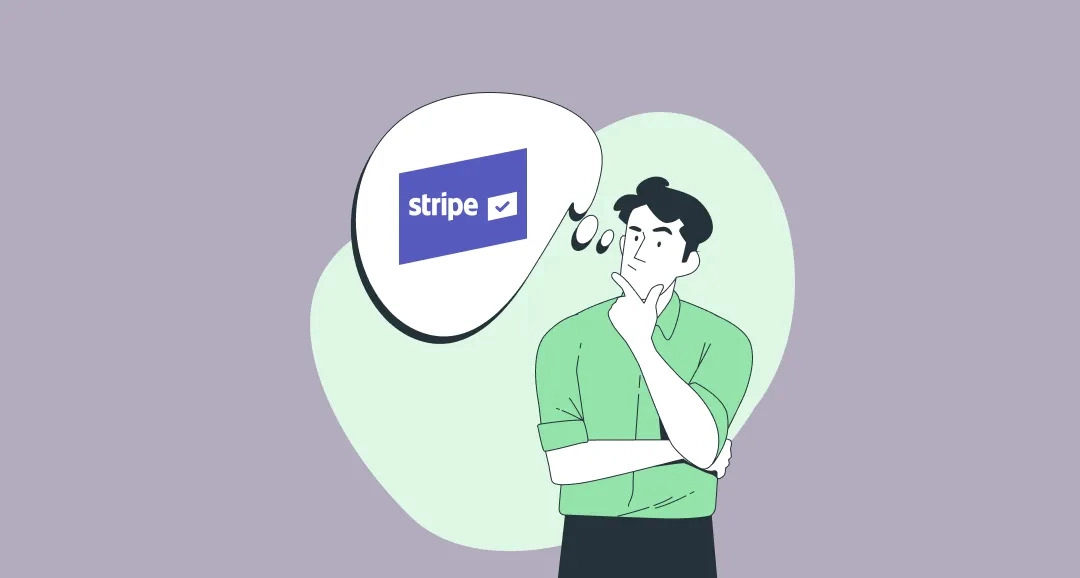
10. Stripe Testing Payments
Before you start working with the solution, you should use test mode. It essentially imitates live mode and allows you to simulate payments, that is, without transferring money around.
You can check:
- Account type that you plan to work with in the future (via API or dashboard).
- OAuth flow (possible for Express/Standard).
- Identification (birthdates, addresses, ID numbers, tax IDs, documents, trigger cards, etc.).
- Replenishments (e.g., failure due to insufficient funds).
- Payment methods (test Stripe debit card numbers, test bank account).
- Payouts (test bank account numbers and debit card numbers with test secret keys).
Using this mode is a good opportunity to check the correctness of performed integrations and set up Stripe for marketplaces in more detail.
Marketplaces that use Stripe get great prospects for continuous business scaling, entering new markets, and, importantly, gaining the target audience’s trust.
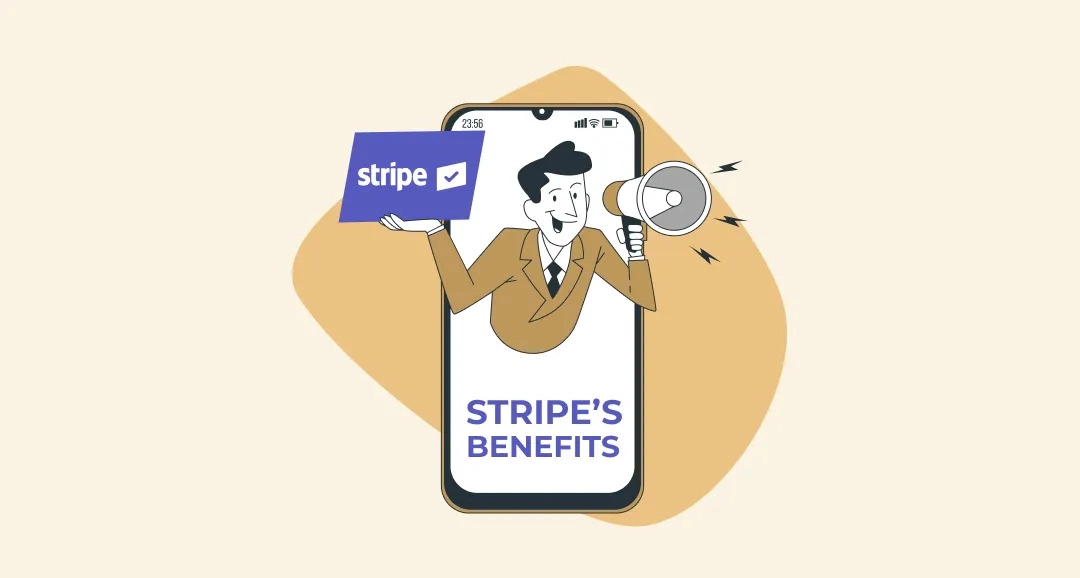
11. Benefits of Using Stripe Payment
As we said above, this is one of the best payment solutions for your marketplace in terms of processing speed and ease of use. Let’s now look at some more unique Stripe benefits for marketplaces.
Why choose Stripe for payments solution:
- Integrated tools that you and your development team can use to customize business processes. The service combines capabilities to automate both payment card processing and payment acceptance. If necessary, you can use it not only online but also at physical points of sale.
- Understandable documentation for IT specialists allows you to understand the principle of the product and its API more quickly and deeply. Access to libraries in popular programming languages greatly speeds up the process.
- Tech updates are performed regularly. The company strives to cover all finance-related processes and therefore releases new features every year. APIs are deployed 16 times a day! No wonder the platform leads the industry in the speed of development.
- Comprehensive information security extends to all the financial information your users entrust to you. We maintain enhanced security through the continuous use of TLS and strict PCI compliance.
Please note that all of the benefits are in the realm of interest not only to you as the marketplace owner but also to the developers with whom you collaborate. One of the important reasons why companies of all sizes and industries use Stripe is precisely because it is very clear and flexible in marketplace development.
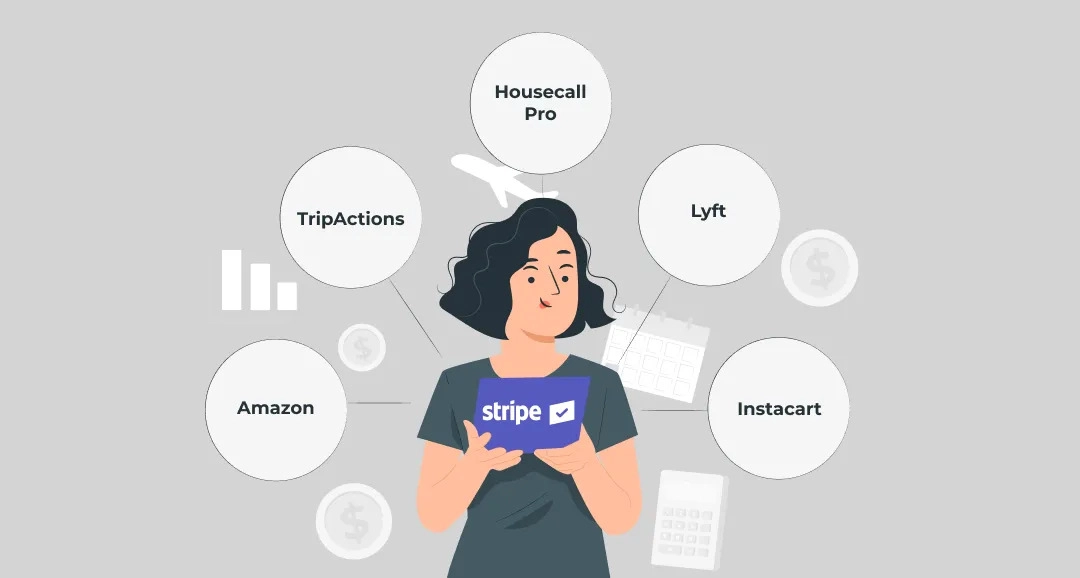
12. What Marketplaces Use Stripe?
At the beginning of this article, we mentioned that among the businesses that use Stripe, there are many market giants, including marketplaces.
Take a look at a few well-known marketplaces that use Stripe and the goals they achieve:
- Amazon. Optimization of global payments and fast launch of the business in new countries (Payments and Connect).
- TripActions. Expansion of travel payment options for large businesses (Payments and Issuing).
- Housecall Pro. Access to all necessary commercial and financial tools (all Stripe products).
- Lyft. Creating a flexible solution for drivers to receive Express Pay (Payments and Connect).
- Instacart. Scaling the payment infrastructure and optimizing the payment process (Connect, Radar, Sigma).
The experience of these and many other companies proves that using Stripe for business is useful in the long run. That’s a good reason to think about creating your own marketplace with Stripe. By hiring professionals in this field, you’ll soon be able to appreciate all the solution’s capabilities.
13. Our Expertise in Stripe Marketplace Integration
The Roobykon team can help you build a marketplace website with Stripe and adapt it to your specific requirements. We are a verified partner of the company with impressive experience developing products for online commerce needs.
Our main specialization is building ready-to-use marketplaces: from creating them from scratch to bringing them to the market. We use modern Ruby on Rails, Node JS, React, and other technologies to solve development tasks. When you need to launch a business quickly, we choose Sharetribe. The Sharetribe platform is one of Stripe’s partners, making connecting the marketplace to it easy.
Whichever technology you choose, we’ll take a flexible approach for your project: picking up exactly the tools and features your business needs right now.
If you plan to expand continually and attract international users, we will take care of your scaling prospects at the start. Our developers know how to set up a marketplace with Stripe in a way that creates the foundation for effective business.
More than 75% of the a16z Marketplace 100 companies use Stripe. That’s not surprising, considering the benefits it brings to businesses, from building customer trust to reducing routine internal processes. Want to see for yourself? We’re ready to help you implement and customize the solution according to your needs.
Recommended articles
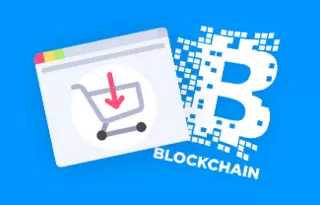 Online marketplaces are about the be revolutionized by blockchain
Online marketplaces are about the be revolutionized by blockchainThis is not the first time that we will talk about the impact of blockchain on the online marketplace business. Changes in e-commerce that are coming along with the blockchain technology are irreversible! And we can't keep quiet about this.
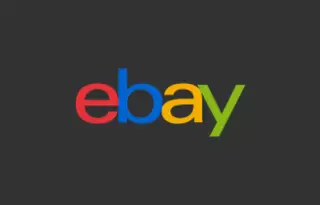 ‘Goodbye PayPal, Hello Adyen,’ says eBay
‘Goodbye PayPal, Hello Adyen,’ says eBayLast month, we learned that one of original marketplace leaders, eBay, plans to cut loose its long-time payment partner, PayPal, in favour of Adyen, a younger Dutch platform. So let's find out more about this...
 KYC & Blockchain
KYC & BlockchainIn the article, we are considering the issue of money laundering through marketplaces. Learn how to recognize fraudsters and how to prevent money laundering by illegal means
 Why Cryptocurrency Payments Are the Future of Your Online Marketplace
Why Cryptocurrency Payments Are the Future of Your Online MarketplacePayment systems evolve along with new emerging human needs and wishes. The cryptocurrency boom is already changing the face of the e-commerce industry as we know it, creating many opportunities for entrepreneurs.






